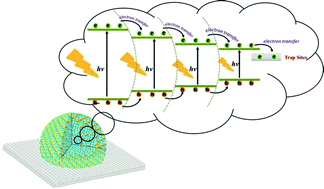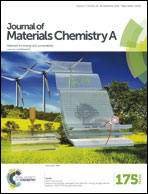A highly active cocatalyst-free semiconductor photocatalyst for visible-light-driven hydrogen evolution: synergistic effect of surface defects and spatial bandgap engineering†
Abstract
Enhancing the efficiency of semiconductor photocatalysts is still a challenging issue for photocatalytic hydrogen evolution. In this work, a synergistic strategy of surface defects and spatial bandgap engineering was realized for constructing a Zn1−xCdxS/SiO2 photocatalyst. A quantum efficiency of 48.6% (at 420 nm) for hydrogen evolution was obtained without the use of a cocatalyst. The molar ratio of Cd : Zn in Zn1−xCdxS particles could be gradually tuned from 0.305 : 1 (inside) to 0.490 : 1 (outside). At least a 0.17 eV potential difference is present between the inside and outside of Zn1−xCdxS particles. Experimental and theoretical analyses showed that photogenerated electrons and holes could vectorially transfer along the spatial bandgap to reach the surface, and be trapped by the surface defects. In situ formed surface Cd species act as the active sites accelerating the surface hydrogen evolution reaction.


 Please wait while we load your content...
Please wait while we load your content...